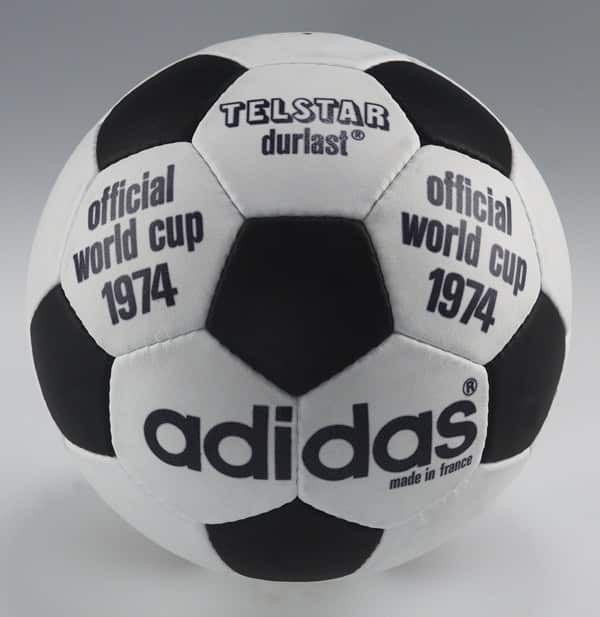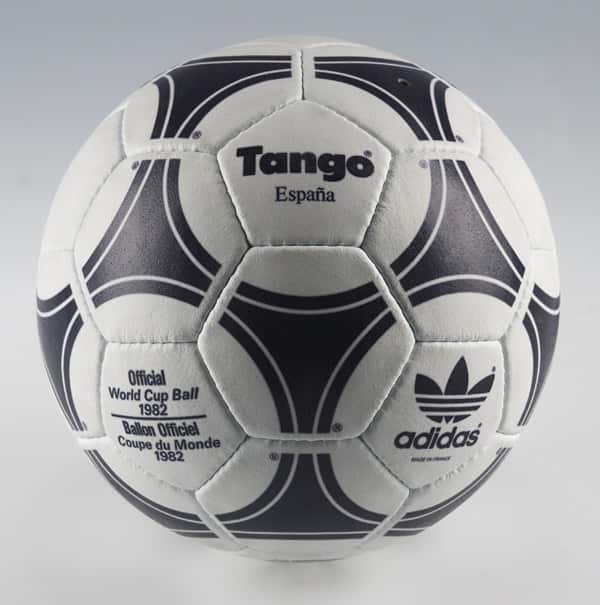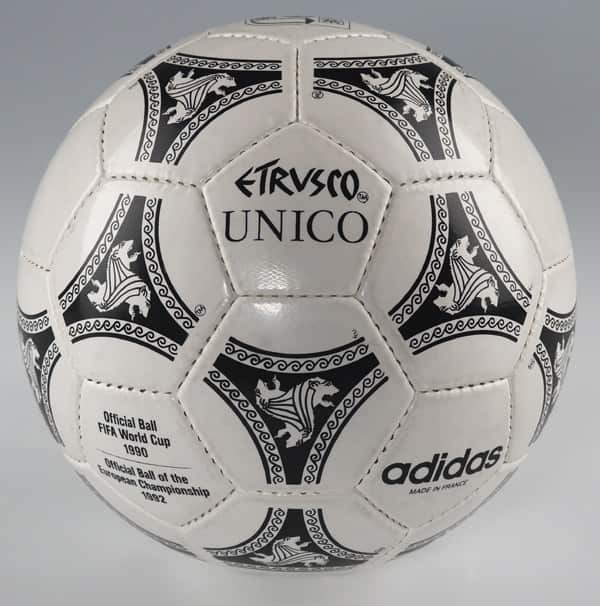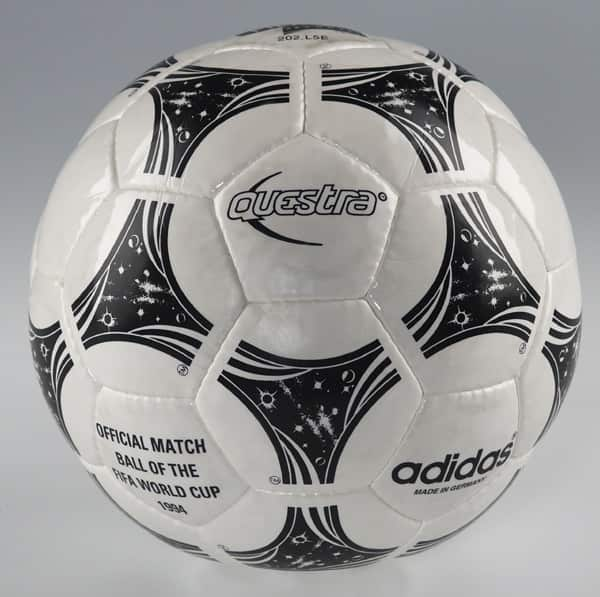1970 FIFA World Cup Mexico adidas Telstar
Image
For its first FIFA World Cup, adidas created the world's most recognised football design. It featured 32 hand-stitched panels (12 black pentagons and 20 white hexagons) that made the ball a more perfect sphere and visible on black and white television for a worldwide audience. To this day, the design remains the football archetype.
1974 FIFA World Cup Germany adidas Telstar/adidas Chile

Two match balls were used in 1974 – adidas Telstar was updated with new black branding replacing the gold branding and a new all-white version of Telstar named adidas Chile was introduced. 1974 was also the first time World Cup Match Balls could carry names and logos – adidas was no longer an anonymous supplier of match balls used on the field.
1978 FIFA World Cup Argentina adidas Tango

1982 FIFA World Cup Argentina adidas Tango España

1986 FIFA World Cup Mexico adidas Azteca

1990 FIFA World Cup Italy adidas Etrusco Unico

1994 FIFA World Cup USA adidas Questra

For the 1994 World Cup, the Questra was first ever match ball to be enveloped in a layer of polystyrene foam. The innovation made the ball softer to the touch and much faster off the foot. The ball's design represents space technology, high velocity rockets and America's "quest for the stars."
1998 FIFA World Cup France adidas Tricolore

The first ever multi-colored match ball, the Tricolore featured an advanced syntactic foam that improved the ball's durability, energy return and responsiveness. adidas also used an under glass print technology for the first time that increased the longevity and visibility of the ball, which featured France's national colors.
2002 FIFA World Cup Korea and Japan adidas Fevernova

For the first time since 1978, the match ball broke away from the traditional Tango design. The innovative Fevernova included a refined syntactic foam layer that allowed for more precise and predictable flight path. Asian culture inspired the revolutionary colorful look.
2006 FIFA World Cup Germany adidas TeamgeistImage
A radically new configuration reduced the amount of panel touch points forming a smooth and perfectly round exterior that improved accuracy and control. Prior to the Teamgeist, the surface of World Cup match balls had notable differences depending on where a player would strike the ball due to seams, ridges and other imperfections where panels come together. The revolutionary propeller design of the Teamgeist minimised corners and created a smoother surface for improved play. The ball was designed with traditional colours of the German flag and was accentuated with the golden colour of the World Cup trophy.
2010 FIFA World Cup South Africa adidas Jabulani

The Jabulani featured a new grip n groove ball technology that provided players a ball with exceptionally stable flight and perfect grip under all conditions. With eight thermally bonded 3-D panels that were spherically molded for the first time, the Jabulani was more round and accurate than any of its predecessors.
2014 FIFA World Cup Brazil adidas Brazuca

2018 FIFA World Cup Russia adidas Telstar 18

*This content is sponsored by adidas
About adidas Football
adidas is the global leader in football. It is the official sponsor / official supplier partner of the most important football tournaments in the world, such as the FIFA World Cup™, the FIFA Confederations Cup, the UEFA Champions League, the UEFA Europa League and the UEFA European Championships. adidas also sponsors some of the world’s top clubs including Manchester United, Real Madrid, FC Bayern Munich, Juventus and AC Milan. Some of the world’s best players also on the adidas roster are Leo Messi, Paul Pogba, Gareth Bale, Karim Benzema, Roberto Firmino, Thomas Müller, Luis Suárez, James Rodríguez, Diego Costa, Mesut Özil, Renato Sanches and Julian Draxler.
Share
Watch the FIFA World Cup 2026™, Tour de France, Tour de France Femmes, Giro d’Italia, Vuelta a España, Dakar Rally, World Athletics / ISU Championships (and more) via SBS On Demand – your free live streaming and catch-up service. Read more about Sport
Have a story or comment? Contact Us

